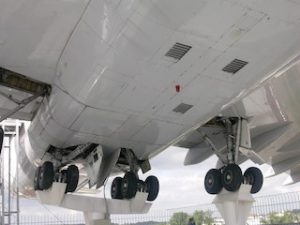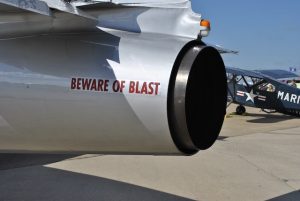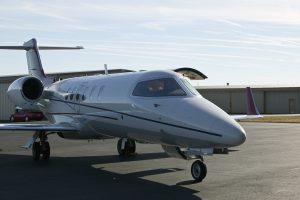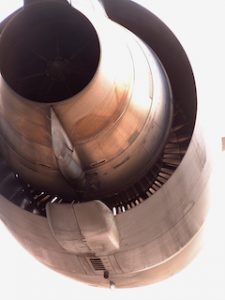Line Oriented Flight Training Courses Teach Taxi And Take-Off
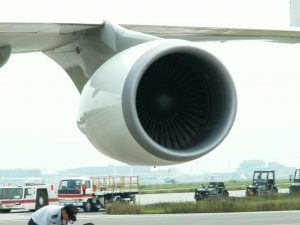 In the aviation industry, taxiing and take-off are critical phases of flight that require precision, coordination, and a deep understanding of aircraft operations. Line oriented flight training is a modern training approach designed to prepare airline pilots for these complex procedures by simulating real-world scenarios. This article explores how LOFT addresses taxiing and take-off training, emphasising the methods, benefits, and impact on pilot performance and safety.
In the aviation industry, taxiing and take-off are critical phases of flight that require precision, coordination, and a deep understanding of aircraft operations. Line oriented flight training is a modern training approach designed to prepare airline pilots for these complex procedures by simulating real-world scenarios. This article explores how LOFT addresses taxiing and take-off training, emphasising the methods, benefits, and impact on pilot performance and safety.
Taxi and take-off training
Taxiing and take-off are foundational aspects of flight operations. Proper execution of these procedures is crucial for ensuring the safety and efficiency of each flight. Here is why effective line oriented flight training courses in these areas is essential:
- Safety: Taxiing and take-off involve navigating complex airport environments and transitioning from ground to air operations. Mistakes during these phases can lead to safety incidents.
- Efficiency: Smooth and efficient taxiing and take-off processes minimise delays and improve operational efficiency.
- Regulatory compliance: Adherence to standard operating procedures and regulations during taxiing and take-off is required for maintaining safety and legal compliance.
Line oriented flight training courses
Line oriented flight training is designed to replicate real-world flight scenarios, focusing on enhancing pilots’ operational skills and decision-making abilities. Unlike traditional training, which often isolates specific skills or manoeuvres, LOFT integrates these skills into comprehensive scenarios that mimic actual flight conditions.
Key elements of LOFT for taxi and take-off
1) Simulation of real-world scenarios
LOFT incorporates high-fidelity flight simulators that recreate the taxiing and take-off phases in various environmental conditions. Pilots experience:
-
- Airport layouts: Simulated airport environments with realistic taxiways, runways, and signage.
- Weather conditions: Various weather scenarios, such as rain, fog, and wind, that impact taxiing and take-off.
- Traffic situations: Interactions with other aircraft and ground vehicles to practice collision avoidance and communication protocols.
2) Standard operating procedures
Training in LOFT emphasizes adherence to standard operating procedures (SOPs) for taxiing and take-off. This includes:
-
- Taxi procedures: Following taxiway routes, managing speed, and ensuring safe clearance from obstacles.
- Take-off procedures: Executing pre-take-off checks, managing thrust settings, and maintaining proper runway alignment.
3) Crew coordination and communication
Effective crew coordination and communication are critical during taxiing and take-off. LOFT training involves:
-
- Crew roles: Defining and practicing the roles of the pilot in command and the first officer during these phases.
- Communication protocols: Using standard communication procedures with air traffic control and other crew members to ensure smooth operations.
Pre-taxi and take-off preparations in LOFT
Before initiating taxi and take-off procedures, pilots undergo thorough preparations to ensure readiness. Key activities include:
1) Pre-flight briefing
The pre-flight briefing sets the stage for the simulation by covering:
-
- Scenario overview: Details of the taxi and take-off scenario, including specific challenges and objectives.
- Operational instructions: Guidelines for taxiing and take-off procedures, including any deviations from standard protocols.
- Weather and traffic: Information on simulated weather conditions and traffic situations that will be encountered.
2) Aircraft familiarisation
Pilots must be familiar with the aircraft’s systems and controls relevant to taxiing and take-off, including:
-
- Flight control inputs: Understanding how control inputs affect aircraft movement on the ground and during take-off.
- Engine management: Knowledge of engine thrust settings and how they impact performance during take-off.
- Navigation systems: Using navigation aids to follow taxiway routes and align with the runway.
3) Pre-take-off checks
Performing pre-take-off checks ensures that the aircraft is ready for take-off. This includes:
-
- Flap settings: Configuring flaps and slats according to take-off performance requirements.
- Engine parameters: Verifying engine settings and performance indicators.
- Flight instruments: Ensuring that all flight instruments are functioning correctly.
In-flight taxi and take-off procedures
During the simulation, pilots practice taxiing and take-off procedures under various conditions. Key elements include:
1) Taxiing
-
- Navigating taxiways: Pilots practice following taxiway markings and signs, managing speed, and making safe turns.
- Obstacle clearance: Ensuring that the aircraft maintains a safe distance from obstacles and other aircraft.
- Communication with ATC: Coordinating with air traffic control to receive taxi instructions and clearances.
2) Take-off
-
- Runway alignment: Aligning the aircraft with the runway centreline and ensuring correct take-off configuration.
- Thrust management: Applying the appropriate thrust settings and monitoring engine performance.
- Rotation and climb-out: Executing the rotation manoeuvre to lift off and transitioning to the climb phase.
Post-take-off debriefing and analysis
After the simulation, a comprehensive debriefing session helps pilots analyze their performance and identify areas for improvement. Key components include:
1) Performance review
-
- Taxi and take-off execution: Evaluating how well pilots executed taxiing and take-off procedures, including adherence to SOPs and handling of challenges.
- Decision-making: Reviewing the decisions made during the simulation, such as speed adjustments and runway alignment.
2) Instructor feedback
-
- Strengths and weaknesses: Instructors provide feedback on pilot performance, highlighting strengths and areas for improvement.
- Scenario analysis: Discussing alternative strategies and solutions for any issues encountered during the simulation.
3) Action plan
Developing an action plan to address identified issues and enhance skills, which may include:
-
- Additional training: Recommendations for further practice or training in specific areas of taxiing and take-off.
- Skill development: Focused exercises to improve techniques and procedures.
Benefits of LOFT training for taxi and take-off
LOFT training provides several benefits for airline pilots, including:
-
- Enhanced safety: By practicing in simulated environments, pilots are better prepared to handle real-world scenarios, reducing the risk of accidents.
- Improved efficiency: Pilots learn to execute taxiing and take-off procedures more efficiently, leading to fewer delays and smoother operations.
- Increased confidence: Familiarity with various scenarios boosts pilots’ confidence in their ability to manage taxiing and take-off effectively.
Conclusion
Taxiing and take-off are crucial phases of flight that require meticulous training and preparation. Line oriented flight training offers a comprehensive approach to mastering these procedures by simulating real-world scenarios and focusing on standard operating procedures. Through detailed pre-flight preparations, immersive simulations, and thorough post-flight debriefings, LOFT ensures that airline pilots are well-equipped to handle the complexities of taxiing and take-off, ultimately enhancing safety, efficiency, and overall performance in the aviation industry.


